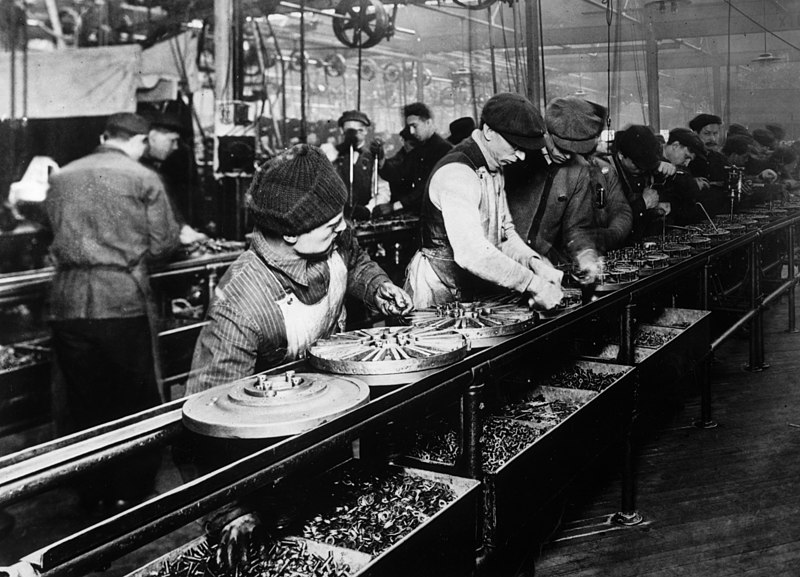
Henry Ford had one goal: put the world on wheels. To be able to provide the masses with a car both reliable and affordable by the average worker, Henry had to solve two complex problems. First, he had to create the car, in a brand new industry, that was simple to operate and required basic knowledge to care for. Second, he had to make a lot of them. His answer to issue A was the Model T, introduced in 1908. By focusing on one model he was able to enhance the efficiency of production, but the company still struggled to make enough to make them appealing to the average Joe’s bank account.
In 1909 a hair over 10,000 of the vehicles left the factory. By the end of 1912 Henry had all but perfected automobile manufacturing in a traditional sense. That year 68,773 units sold, allowing prices to drop from $825 in 1909 to $560 in 1912. Then, inspiration struck after observing production workers at a slaughter house and a brewery.

Bottling plants and slaughter houses moved product, not people, during operation. Ford implemented changes to his factories to reflect this style of manufacturing, thus solving the second roadblock to his goal. Ford’s revolutionary moving automobile assembly line came to life December 1, 1913. Model Ts began to roll out of the factory in record numbers; 1914 saw 202,667 built.
The mass production of the Model T only got faster, leading to a major milestone. On this day in 1915, the 1,000,000th Ford car left the factory. It had taken 7 years since the beginning of Model T production and 12 years of total Ford production, to get to this point. In the 12 more years the Model T would remain the staple of the Ford lineup, some 14 million more would be made. The last one left the factory on May 26, 1927, priced at just $360.






















